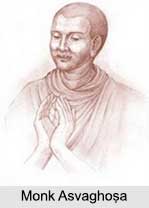 Buddhist Poets framed the Buddhist Literature which helps to understand the main streams and the whole of Lord Buddha and Buddhism. The first examples of Buddhist poetry can be found in traditional scriptures for example the "Dhammapada".
Buddhist Poets framed the Buddhist Literature which helps to understand the main streams and the whole of Lord Buddha and Buddhism. The first examples of Buddhist poetry can be found in traditional scriptures for example the "Dhammapada".
Indian Buddhist Poets
Generally most Buddhist sutras have a prose element supplemented by verses that retell and poetically sum up the themes of earlier prose passages. The Buddhist poetry which is featured to the Lord Buddha himself forms a part of "Buddha Speech".
Monk Asvaghoa used his poetic aptitude and education in "Brahmanic" tradition to create poetry on a variety of Buddhist themes, like the life of the Buddha, the "Buddhacarita". He is considered India"s supreme poet before Kalidasa. When Lord Buddha had preached his first sermon in Varanasi, Ashvaghosha saw the city had been occupied by a Kushana emperor who was a devoted Buddhist. Ashvaghosha was a brilliant orator who spoke at length on "Mahayana" Buddhist set of guidelines at the fourth Buddhist council. His recognition lay mostly in his talent to describe the complicated concepts of "Mahayana Buddhism". The works attributed to him are the "Mahayana-shraddhotpada-shastra" ("The Awakening of Faith in the Mahayana"), the "Buddhacarita" ("The Life of Buddha") and the "Mahalankara" ("Book of Glory").
The philosophical writings of the great "Mahayana" sages, such as Nagarjuna and Asanga stand in the same relation to the "Mahayana" sutras as the "Abhidhamma" treatises do to their "Hinayana" counterparts. Although immensely convincing, they were never collected into a "Pitaka". Many of these Buddhist writings are found in Tibetan texts, Chinese translations, and even in distant North West countries.
This article is a stub. You can enrich by adding more information to it. Send your Write Up to [email protected].




















